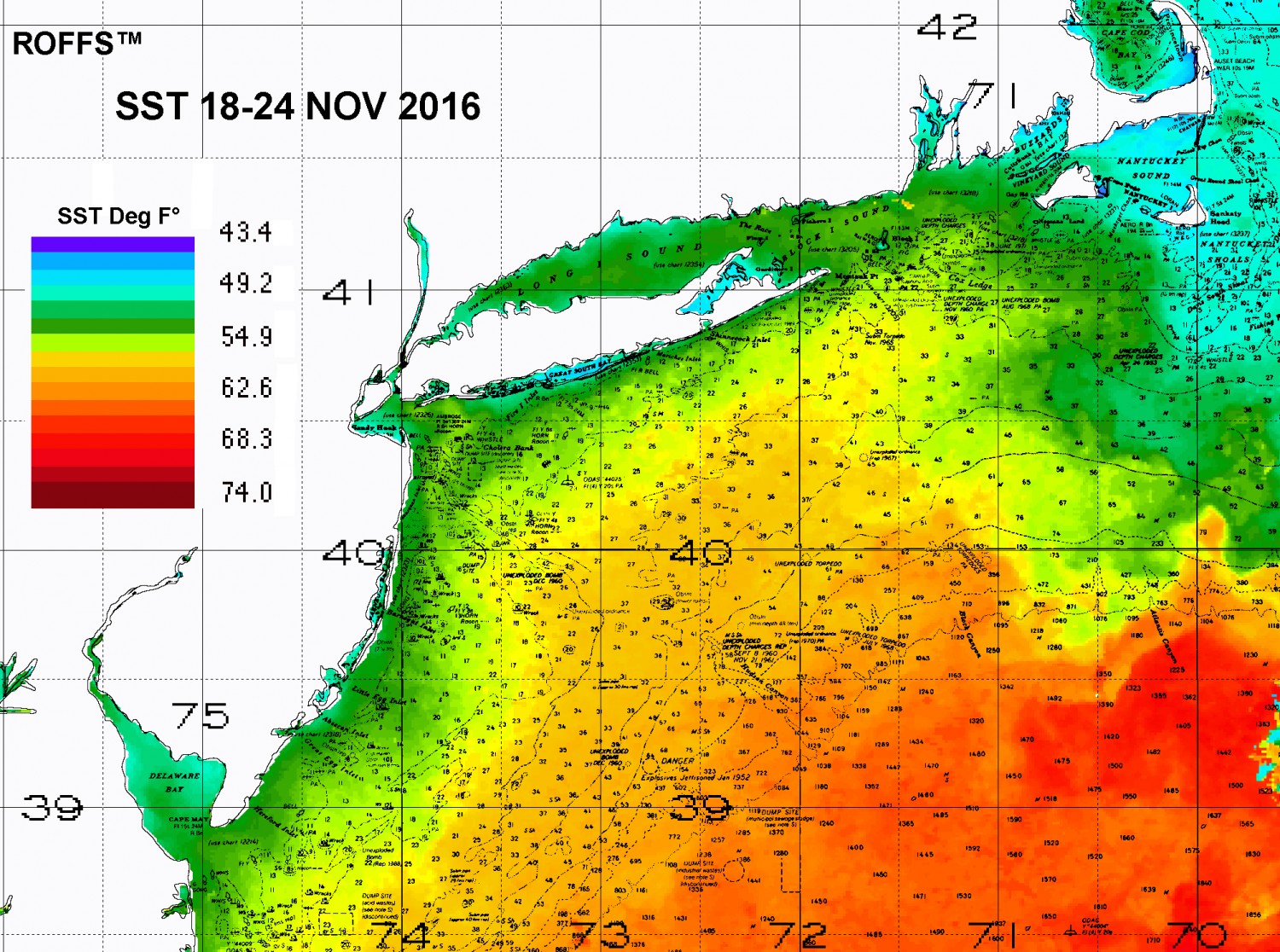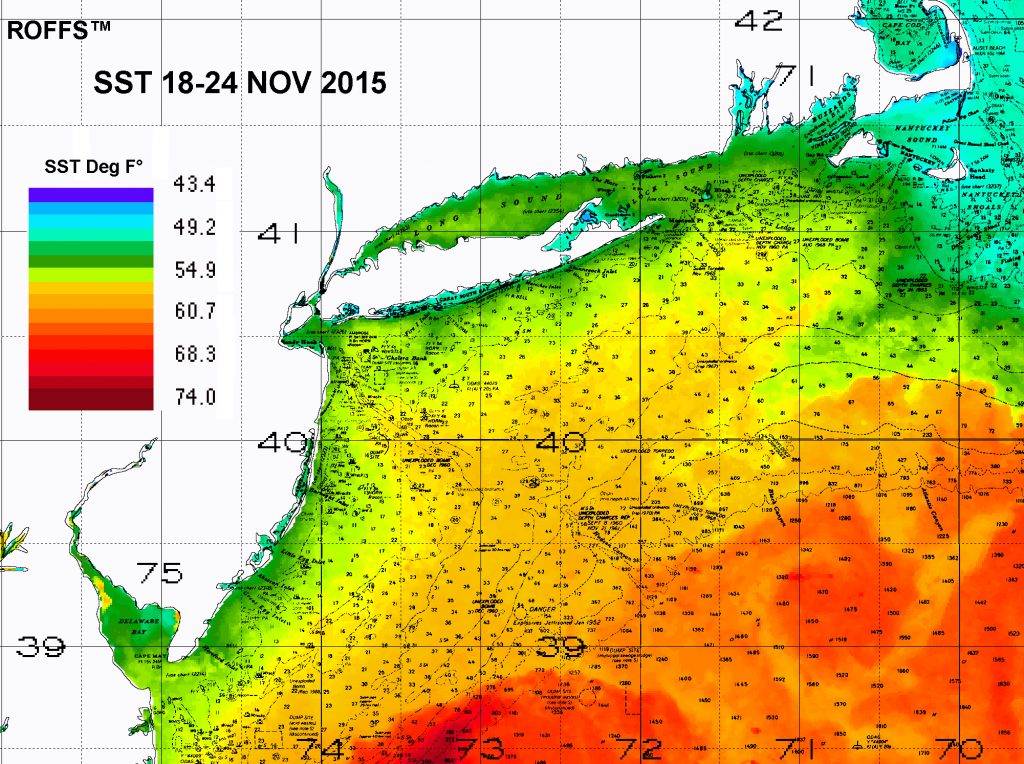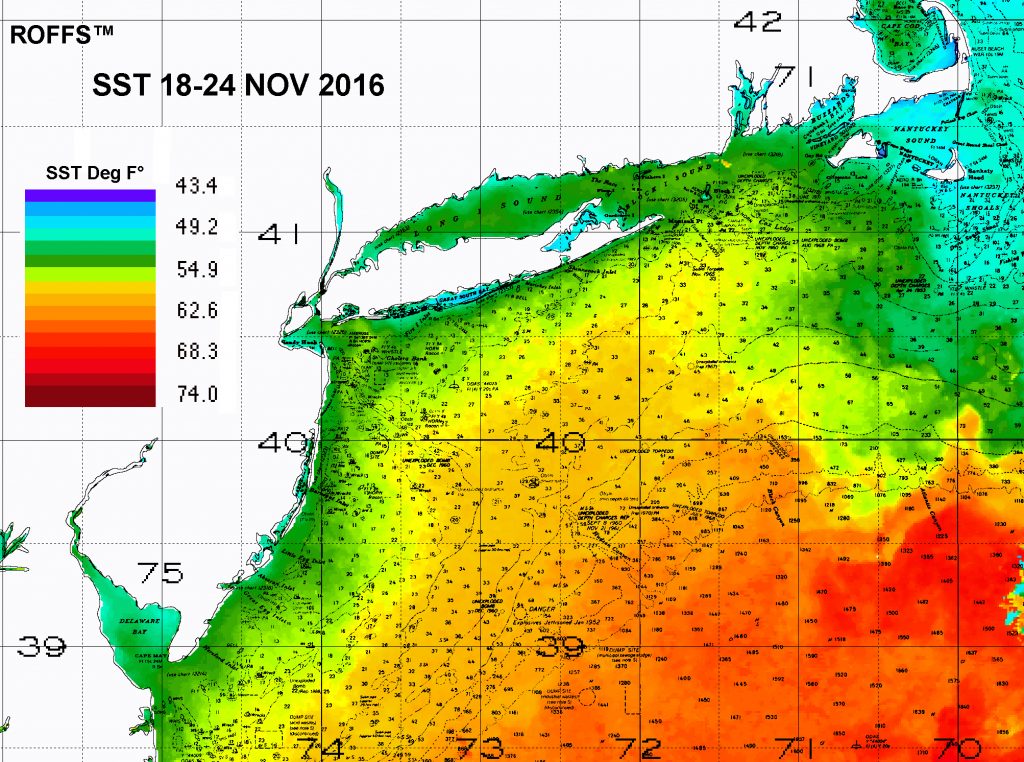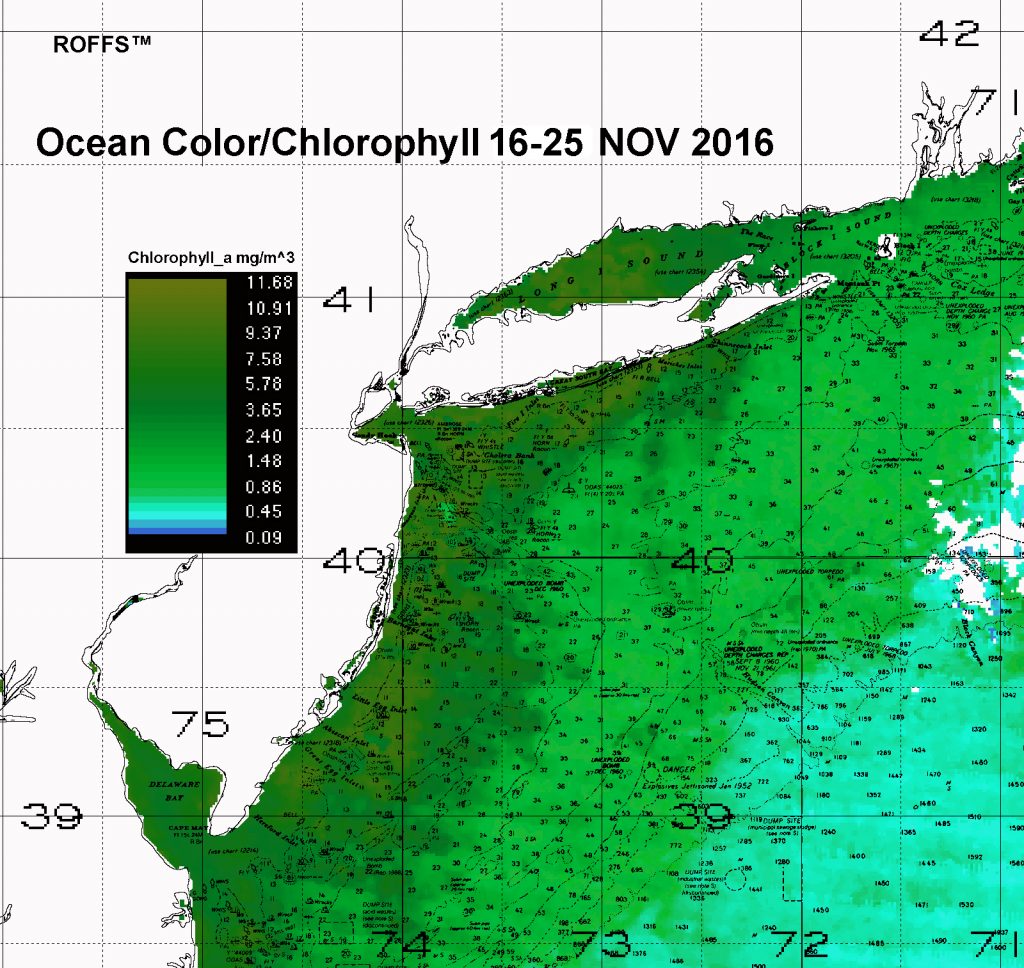Please CLICK HERE to download as a PDF.
ROFFER’S OCEAN FISHING FORECASTING SERVICE, INC.
TOLL FREE 800 677-7633 & (321) 723-5759 // WWW.ROFFS.COM
AUTUMN WHALE AND TUNA ANALYSIS: COMPARING OCEAN CONDITIONS FROM 2016 WITH 2015 OFFSHORE OF NEW JERSEY AND NEW YORK TO UNDERSTAND INCREASED WHALE MIGRATION POPULATION
Fisherman, boaters and even beachgoers offshore of New Jersey and Long Island, NY have noticed an increase in whale sightings off their coasts over the past few years, specifically humpback whales. Some attribute the increased numbers of whales migrating through the area to cleaner less polluted waters and/or an increased menhaden population (important food source for humpbacks). ROFFS™ offers other possible explanations that may contribute to the increased whale sightings by comparing the ocean conditions depicted by satellite data offshore of New Jersey and New York during mid-November 2016 with the ocean conditions during mid-November 2015. As the figures show (green and blue are cooler waters, orange and yellow are warmer waters) and buoy readings confirm, the sea surface temperature (SST) within 10-30 miles offshore of the New Jersey and Long Island are about 1.0°F to 1.5°F cooler in 2016 compared to the same time period in 2015. Perhaps the cooler temperatures are closer to the preferred habitat range for these whales for both comfort and food sources. Furthermore, we also went back and compared late summer/early autumn SST ocean conditions between 2016 and 2015 (15-20 September) for this same area. Similar SST trends were confirmed by buoys and satellite imagery that in 2016, SST readings were also about 1.0°F to 1.5°F cooler than the same time period in 2015 during late summer/early autumn.
Perhaps more importantly, looking at ocean color/chlorophyll satellite data during this similar November time period (see figures), it appears that the chlorophyll concentration was higher in 2016 offshore of New York and especially New Jersey compared to 2015 (green and brown higher concentration and blue-green to blue lower concentration). This could also explain the increased whale populations in during this migration period as higher chlorophyll concentrations represent higher availability of food sources for the whales in 2016 compared to 2015. Furthermore, there was less warm core Gulf Stream eddies offshore in this area during the autumn season in 2016 compared to 2015. Combinations of these oceanographic and environmental factors are likely to contribute to these increased whale sightings. Also of note is that there is STILL Gulf Stream related water (60°F to 65°F to 67°F) offshore in places near Block and Atlantis Canyons and farther southwest off of Hudson to Washington and Norfolk Canyons for some Holiday tuna, call ROFFS™ to put you on the December fish when the weather permits.
Please click this LINK for more information.
Please click images below to view larger in your browser:










